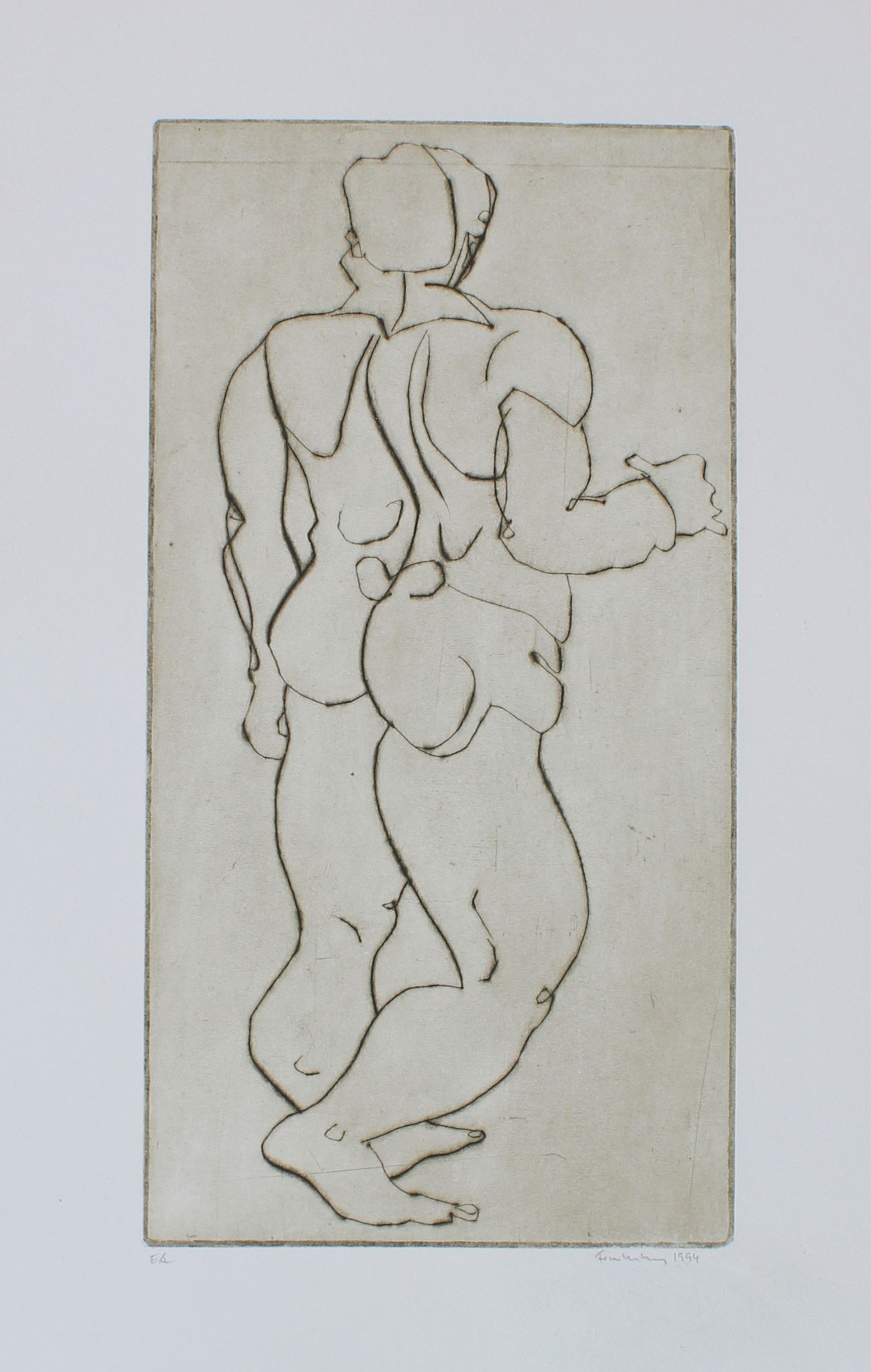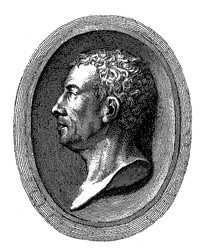Es handelt sich um eine moderne Transformation und Interpretation einer antiken Skulptur eines Athleten.
Dargestellt ist dieser in der Rückenansicht. Er ist im Kontrapost abgebildet. In diesem Fall ist sein linkes Bein das Standbein, welches fest auf dem Boden steht. Das rechte Bein hingegen fungiert als Spielbein und ist damit unbelastet und berührt nur mit den Fußspitzen den Boden. Das Becken des Mannes ist aus der senkrechten Körperachse nach links herausgeschoben, wodurch der muskulöse Oberkörper in eine S-förmigen Schräghaltung gebracht wird. Der linke Arm hängt locker am Körper des Athleten herab, der rechte Arm ist hingegen angewinkelt. Der Kopf ist leicht nach links gewandt. Als Vorbild hierfür dürfte der Doryphoros des Polyklet gestanden haben.
bez. u.l.: EA
sign. u. dat u. r.
en

